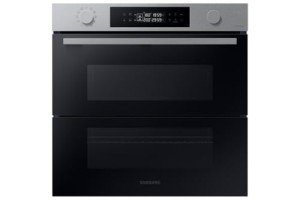What Is In Built Oven And How To Utilize What Is In Built Oven And How To Use

Understanding In-Built Ovens: A Comprehensive Guide
In the world of contemporary kitchen style, inbuilt ovens have risen to prominence, mixing performance with visual appeals. Their seamless combination into cabinetry provides a streamlined look, making them progressively favored by property owners and culinary lovers alike. This article checks out the various features, benefits, installation considerations, and popular types of inbuilt ovens, along with addressing some frequently asked concerns.
What is an In-Built Oven?
An in-built oven, typically described as a built-in oven, is a kitchen device developed to be installed within cabinetry, rather than as a freestanding system. This setup allows for a more advanced and orderly kitchen layout while making the most of available space. Built-in ovens been available in numerous sizes, styles, and performances to match various cooking needs and preferences.
Advantages of In-Built Ovens
The benefits of installing an inbuilt oven extend beyond simple looks. Here are some key benefits:
- Space Efficiency: Built-in ovens are created to fit snugly within kitchen cabinets, making them perfect for compact areas. This style leaves counter area free for meal preparations.
- Customizable Design: Homeowners can select from a variety of designs and surfaces to complement their kitchen decoration, enhancing the overall appearance of the space.
- Improved Functionality: Many built-in ovens are equipped with innovative cooking technology, supplying functions such as convection cooking, steam cooking, and self-cleaning functions, which improve cooking efficiency and versatility.
- Ergonomic Height: Installing an oven at eye level minimizes the requirement to flex down, making it simpler to check food and manage meals without straining the back.
- Improved Safety: Built-in ovens can include safety functions such as cool-to-the-touch surfaces and child locks, which can be particularly important in homes with children.
Kinds Of In-Built Ovens
Inbuilt ovens can be found in a number of types to cater to various cooking requirements. Below is a contrast of common types:
| Type | Description | Pros | Cons |
|---|---|---|---|
| Single Oven | A traditional oven that cooks from one area | Space-efficient, much easier to utilize | Limited cooking capacity |
| Double Oven | 2 separate oven compartments for varied cooking | More cooking space, versatility | Greater cost, uses up more space |
| Compact Oven | Smaller sized ovens perfect for small kitchens or as a second oven | Space-saving, versatile | Limited capacity |
| Steam Oven | Uses steam for cooking, preserving wetness | Healthier cooking alternatives | Usually more expensive |
| Wall Oven | Built into the wall, available in single or double configurations | Conserves flooring area | Installation complexity |
Functions to Consider When Choosing an In-Built Oven
When choosing a built-in oven, numerous functions should be taken into consideration:
- Size: Measure your kitchen space and kitchen cabinetry to make sure the oven fits properly. Common widths for built-in ovens range from 24 inches to 30 inches.
- Cooking Methods: Determine the cooking methods you prefer-- standard, convection, or steam. This decision will considerably affect your cooking design and the oven's capabilities.
- Energy Efficiency: Look for ovens with high energy efficiency ratings. These designs save money on energy costs and are better for the environment.
- Control Options: Evaluate the control interfaces. Some models provide clever features enabling for remote cooking control and monitoring via smart device apps.
- Security Features: Ensure the oven comes with necessary safety features, especially if children will be present. built under electric oven and hob packages -out systems and cool exteriors are important improvements.
Setup Considerations
Correct setup is important for the optimum performance of an in-built oven. Here are some setup factors to consider:
- Ventilation: Ensure appropriate ventilation to get rid of smoke and odors. Speak with local building regulations regarding kitchen ventilation requirements.
- Electrical Requirements: Built-in ovens usually need a devoted electrical circuit. Have a certified electrical expert examine price and safety.
- Professional Installation: While DIY may be tempting, hiring an expert installer makes sure the oven is fitted safely and safely.
FAQs About In-Built Ovens
What is the difference between a built-in oven and a freestanding oven?
Built-in ovens are developed to be installed within cabinets, whereas freestanding ovens can stand alone and usually combine oven and cooktop in a single home appliance.
Can I set up a built-in oven myself?
While DIY installation is possible, it is typically suggested to employ a professional to guarantee security and adherence to regional building codes.
Are built-in ovens worth the investment?
Yes, inbuilt ovens usually use improved looks, advanced functionality, and effective use of area compared to traditional freestanding models.
What maintenance do built-in ovens require?
Regular cleaning, inspecting seals, and guaranteeing correct ventilation are necessary maintenance tasks. It's a good idea to follow the producer's directions for specific care standards.
How much does an in-built oven normally cost?
Prices can vary substantially based upon functions, brand, and type, however built-in ovens normally range from ₤ 700 to ₤ 3,000 or more.
Inbuilt ovens present a mix of beauty and usefulness, making them an outstanding choice for both new constructions and kitchen remodels. Comprehending the types, features, and installation considerations can empower homeowners to make educated choices about which built-in oven best fits their requirements. As culinary trends evolve and kitchen style becomes more advanced, built-in ovens will continue to play a considerable function in contemporary kitchens, merging cooking with design and functionality.

